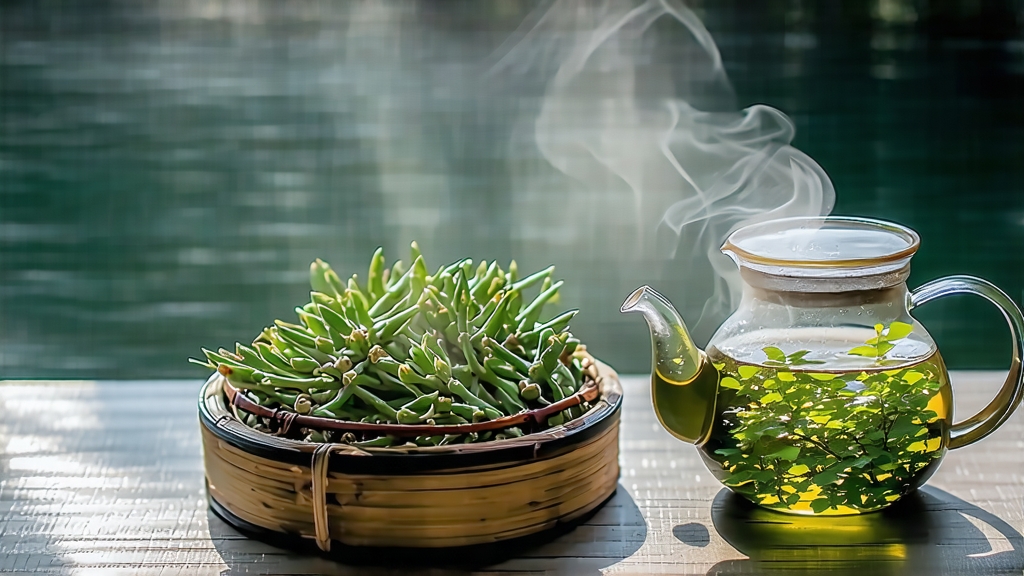
Biluochun, whose name literally means “Green Snail Spring,” is one of China’s ten most celebrated teas, yet it remains a quiet legend outside the circles of serious tea lovers. Grown on the mist-lapped peninsulas of Lake Tai in Jiangsu province, this emerald-green, downy-curled tea has been seducing emperors, poets, and farmers since the late Tang dynasty. Unlike the broad-leaf green teas of the southwest, Biluochun is fashioned from the tiniest buds of a local clone so tender that one kilogram of finished tea contains more than seventy thousand tips. The result is a liquor that smells of orchards at dawn—white peach, flowering apricot, and a whisper of marine air—delivered in a texture as light as silk floss.
History and myth intertwine around Biluochun’s birth. The first written record appears in the 1670 county gazette of Dongting Shan, where monks describe a tea so fragrant that pickers placed it between layers of orange peel to keep the aroma from overwhelming the work shed. The Kangxi Emperor (r. 1661-1722) reportedly tasted it on a southern inspection tour and, finding the original name “Xia Sha Ren Xiang” (“Scary Fragrance”) undignified, rechristened it Biluochun for its snail-shell shape and spring harvest. Trade junks carried it down the Grand Canal to Beijing, and by the Qianlong era it had become a tribute tea, packed in lead-lined chests sealed with the imperial dragon.
Botanically, Biluochun belongs to the small-leaf China plant, Camellia sinensis var. sinensis. Two hyper-local cultivars dominate: Dongting Ye (Dongting Leaf) and Dongting Wu (Dongting Black-stem), both selected over centuries for early budding and high aromatics. The plants are intercropped with fruit trees—peach, plum, loquat, and pomegranate—so that the tea leaves absorb petal-fall perfumes in March and April. This “ecological aromatization” is not marketing folklore; gas-chromatography studies show elevated levels of linalool and geraniol, the same compounds found in the blossoms above the tea rows.
Harvest begins when the overnight temperature stays above 5 °C and the buds reach “sparrow’s tongue” length, about 1.5 cm. Experienced pickers use a two-finger pluck that snaps the bud without the nail, preventing oxidation browning. The leaf must reach the village workshop within two hours; any longer and the volatile bouquet collapses. A master processor judges the hour by the moisture on the bud’s back: if the dew dot stays round, the leaf is still asleep; if it begins to flatten, enzymatic activity is awakening and firing must start immediately.
The craft sequence—killing green, rolling, and drying—lasts exactly thirty-five minutes, a window so tight that workshops play a traditional drumbeat to keep every worker in synchrony. First comes high-temperature pan-firing at 180 °C for four minutes, a step called “touching green,” where the picker-turned-fryer tosses 250 g of leaf in a wok polished smooth by decades of straw brushes. The goal is to destroy leaf enzymes while locking in the peach note. Next the temperature drops to 70 °C and the leaf is rolled into tight spirals against the wok wall; the pressure must be firm enough to rupture cell walls yet gentle enough to keep the bud intact. Finally, a low 50 °C drying phase reduces moisture to 5 % and sets the curl. When done correctly, the finished tea looks like tiny jade snails covered in silver down, each weighing a mere 0.04 g.
Water choice is critical for brewing. Lake Tai itself supplies the ideal liquor: slightly hard (80 ppm CaCO₃) and rich in silica, it softens astringency and amplifies sweetness. Abroad, a low-mineral spring water with neutral pH is the best substitute. Heat the water to 75 °C—any hotter and the buds “stand up” vertically, releasing an aggressive bitterness. Use a tall, clear glass so you can watch the leaves dance. The classic ratio is 3 g of tea to 150 ml of water. Pour the water in a high, thin stream so that the hydrodynamic force rotates the leaves, a motion known as “dragon turning pearl.” After thirty seconds the buds begin to unfurl, sinking slowly like green snowflakes. Decant the entire